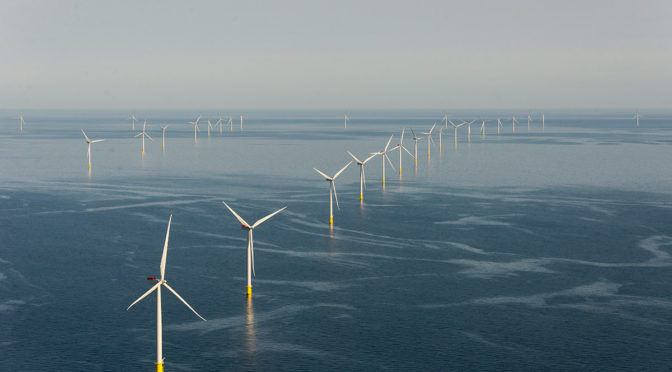American offshore wind is continuing its forward momentum: More than 350 offshore energy services and manufacturing pros gathered at the Offshore Wind Executive Summit in Houston, Texas last week.
Their goal: charting a path to tap into America’s strengths and knowledge, and use them to build offshore wind energy infrastructure for this growing industry.
The Block Island Wind Farm powered up late last year, and 24 gigawatts (GW) of potential capacity in offshore wind areas have now been leased, meaning U.S. offshore wind has officially arrived.
This offers a most welcome business opportunity for offshore energy services and manufacturing leaders.
Crossover opportunities for the oil and gas sector
Attendees from last week’s conference included offshore oil and gas giants such as DONG Energy and Statoil; European offshore wind veterans such as Avangrid/Iberdrola; and offshore wind developers like U.S. Wind. They recognize that offshore wind and offshore oil and gas are more alike than not, and they want to explore crossover business prospects in the U.S. market.
“The challenges of the offshore environment are the same for wind and for oil and gas,” said Randall Luthi, President of the National Ocean Industries Association, in his keynote address.
Both industries face similar permitting timelines and stakeholder issues. They can both provide a significant source of reliable, homegrown U.S. energy. And both offer business opportunities to the U.S. offshore energy service sector and supply chain while relying on it for success.
While the oil industry is poised for a recovery, offshore wind is a longer-term proposition. So we can expect offshore energy services companies to play a major role in offshore wind even when oil prices rise.
New markets for established businesses
Gulf Coast offshore energy companies played an important role in building the Block Island Wind Farm, and that put into sharp focus the opportunity offshore wind holds.
For example, Louisiana-based Montco Offshore’s vessels and crews helped install the Rhode Island wind farm’s subsea structures. Those were built by fellow Louisiana company Gulf Island Fabrication. Montco Offshore’s success on the Block Island project was highlighted for attendees, illustrating the port and harbor considerations and complex installation processes.
These case studies demonstrated both the challenges and opportunities of diversifying into offshore wind. Gulf Island Fabrication and offshore wind developers mutually expressed the need for patience and vision, and a bit of faith.
“The amount of work a company does on offshore wind projects may depend on how much time and money it’s willing to commit,” said Roy Francis of Gulf Island Fabrication, “as it may be years before a company needs to cut steel for a project.”
“We need to look at this sector and see where it is going,” said David Rowland of Avangrid/Iberdrola, a developer of Vineyard Wind off the coast of Massachusetts. “If you wait for orders, you might miss the boat.”
The day-and-a-half long conference in Houston also featured panels on adapting oil and gas technology to offshore wind platforms; the engineering and design work that will be needed; and opportunities for offshore energy sector ingenuity that will increase performance, manage risk and lower offshore wind energy costs.
All of these activities – across the spectrum of developing, permitting, engineering, construction and operating offshore wind farms – have the potential to create and support thousands of U.S. jobs. The U.S. Department of Energy projects that up to 160,000 U.S. jobs could be created from a robust, multi-billion dollar build-out of offshore wind farms off the Atlantic, Gulf of Mexico, Great Lakes, and Pacific coasts.
Of the 350-plus attendees, more than two-thirds reported they came from offshore oil and gas services and manufacturing companies. More than half of attendees said this inaugural Summit in Houston was the first offshore wind educational event they had attended.
With a more than 4 GW of market visibility in the Northeast U.S. alone, and an even bigger market potential on the horizon, we have confidence that this is only the beginning. U.S. offshore wind has indeed arrived, and its long and productive journey is now underway.
aweablog.org


